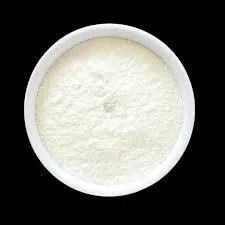
Tet . 18, 2024 18:08 Back to list
HPMC Varieties and Their Applications in Various Industries
Understanding HPMC Grades and Their Uses
Hydroxypropyl methylcellulose (HPMC) is a versatile and widely used cellulose ether that finds application in various industries, including food, pharmaceuticals, cosmetics, and construction. The unique properties of HPMC, such as its thickening, emulsifying, and film-forming abilities, are influenced by its grade, which refers to its specific chemical composition, viscosity, and intended application. Understanding the different grades of HPMC and their uses is crucial for manufacturers and end-users alike.
Understanding HPMC Grades and Their Uses
One of the most significant applications of HPMC is in the pharmaceutical industry as a drug excipient. Its ability to form hydrophilic gels upon contact with water makes it an excellent substance for controlled-release formulations. The various grades of HPMC allow for careful manipulation of the drug release rates, making it possible to design tablets and capsules that release their active ingredients over extended periods. This property is particularly beneficial for medications requiring sustained and consistent therapeutic effects.
hpmc grades and uses

In the food industry, HPMC serves as both a thickener and a stabilizer. It is often used in gluten-free baking, as it helps improve dough elasticity and moisture retention, mimicking the texture typically provided by gluten. Additionally, HPMC acts as a suitable emulsifier, preventing separation in sauces, dressings, and various other food products. Its use in low-fat and low-calorie food formulations is particularly noteworthy, as it contributes to texture and mouthfeel without adding additional calories.
Cosmetic formulations frequently incorporate HPMC as well. Its film-forming properties make it an effective ingredient in products such as lotions, creams, and hair care items. HPMC helps to enhance the texture and stability of these products, providing a smooth application and ensuring consistency throughout the shelf life of the product.
In construction, HPMC is used in various building materials, such as mortars and tile adhesives. Its water retention properties ensure that these materials do not dry out too quickly, allowing for better workability and bond strength. Furthermore, the inclusion of HPMC in these mixtures contributes to improved adhesion and flexibility, making it a valuable additive in modern construction practices.
In conclusion, the diverse grades of HPMC cater to a wide range of applications across different industries. Understanding these grades and their respective properties allows manufacturers to select the appropriate type of HPMC to meet specific formulation requirements, ultimately enhancing product performance and consumer satisfaction. As industries continue to evolve, the relevance and demand for HPMC will undoubtedly grow, showcasing its integral role in product innovation.
-
What is HPMC?
NewsJun.06,2025
-
Understanding Redispersible Powder: The Future of Construction Materials
NewsJun.06,2025
-
Understanding RDP Powder: The Ultimate Solution for Your Construction Needs
NewsJun.06,2025
-
Pure HPMC: The Ideal Solution for Modern Construction and Building Materials
NewsJun.06,2025
-
Methyl Hydroxyethyl Cellulose: A Versatile Chemical Compound
NewsJun.06,2025
-
Hydroxyethyl Cellulose Power: The Essential Chemical for Various Industries
NewsJun.06,2025







